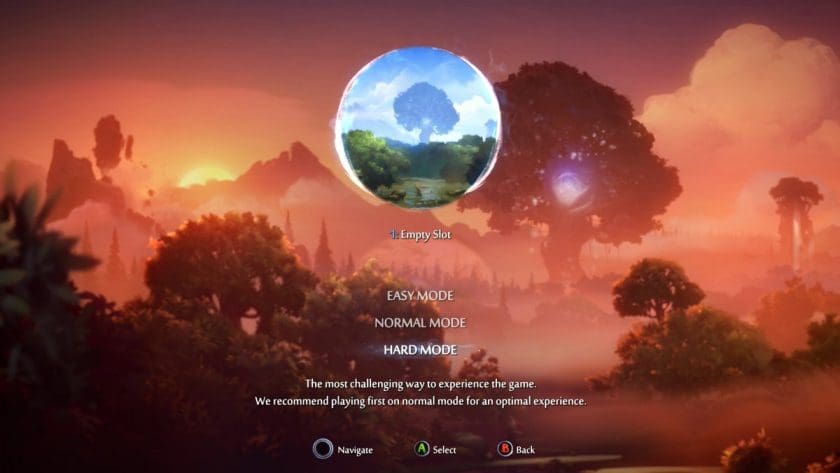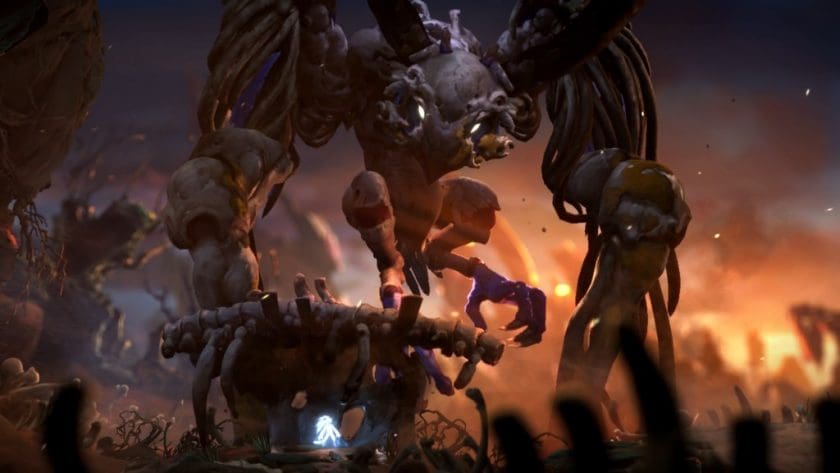GamePass gave me access to Ori and the Will of the Wisps on launch. However, 100% completion on Ori and the Blind Forest: Definitive Edition took precedence in my household.
It ended up being a good thing that I waited until later in the day to play. An update was released midday so I missed out on the technical bugs that professional journalists experienced.
Over the past few days, there have been a number of articles about how difficult Ori and the Will of the Wisps is. There are articles about how to avoid death. There is encouragement to play the first 90 minutes before you fully commit to hard mode. Even the game itself has a message when choosing the difficulty that tries to steer players toward normal mode for an optimal experience.
Ori and the Blind Forest was a frustrating game at times. There were rooms with spikes and portals that tried to drop you directly onto those spikes. There was an entirely dark level aside from the little bit of light Sein provided. That room led to spiders that spent their entire lives waiting for the opportunity to force me into a death pit.
No matter what obstacle Moon Studios put in front of me, I prevailed. The feeling of satisfaction made the challenging moments worth it. The only feeling I struggle to get over is the saving system in the previous game. Ori and the Blind Forest allowed you to save on any safe, solid ground by using energy to create “soul links.” That would be fine if energy weren’t a semi-limited resource required to open doors and progress the game. This is all assuming you actually remembered to save.
One of the first things I noticed about Ori and the Will of the Wisps is the implementation of the checkpoint system. Upon death, players respawn at the most recent checkpoint, which is often immediately before the part that killed them. Not having to manually save or prioritize saving with full health allows players to focus on the game itself. In addition, effective checkpoint systems give the user the confidence to try new methods of solving in-game obstacles.
Ori and the Will of the Wisps offers many gameplay improvements over its predecessor. Sein was replaced with a more Zelda-esque equipment system. Instead of one attack, players can assign up to 3 active abilities to the face buttons. I also very much enjoyed rebuilding Wellspring Glades and creating a sense of community among the NPCs.
Story-wise, I didn’t cry. I cried when Naru died in the beginning of Ori and the Blind Forest. I also cried tears of joy when Gumo used the light to bring Naru back to the world of the living. Even now, I scream “GUMO” in excitement every time that long-legged guy is on my screen. I don’t have the same attachment to the at risk characters in Ori and the Will of the Wisps. This could be accomplished with more character development but that would add a lot of time to the game for one quest NPCs.
The cut scenes are still worth a watch. While not a full tearjerker, there is still an important lesson in Shriek’s story that is better than your average “don’t judge a book by its cover.”
My recommendation for an optimal experience to play on PC with an Xbox controller on whatever difficulty you feel is best. I played on hard and was always confident that I could beat the game.






